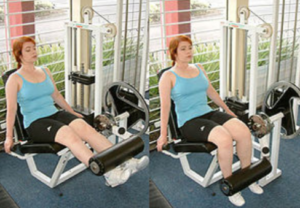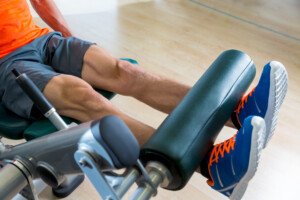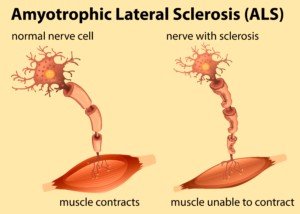Yes, it’s possible to do leg extensions with poor form vs. perfect form, and great technique makes all the difference in the world.
Leg extensions can be done in a way for best results. It isn’t just a matter of plop down on the leg extension machine and start lifting like an automaton.
There are ways to tweak the leg extension experience so that you get the most benefits from this exercise.
While doing leg extensions, never completely lock out the knees. This, over time, can wear at the cartilage in the knees, especially at heavier weights.
Another common mistake that I see is letting the weights down quickly, letting gravity do some of the job.
The leg extension exercise consists of two segments: lifting the weight up, and then lowering the weight down.

Source: George Stepanek
Lowering weights is a form of strength training. Just because the weight handling is in a downward motion, doesn’t mean that it doesn’t count as strength training.
Lowering the weights in the leg extension exercise is half the routine. By letting the weights just drop, rather than releasing them with control and effort, you are performing an incomplete leg extension.
The lowering portion of the leg extension (or any weightlifting routine) is called the “negative” phase of the muscle contraction.
The negative phase is very important. In fact it’s so crucial that many fitness enthusiasts will concentrate on “negative work” during their strength training sessions.
The negative phase of the leg extension will go a long way towards tearing down muscle fibers; and that’s a good thing, the tearing down of muscle fibers, because it is the recovery from this that will require FAT for fuel, and presumably, one of your goals is to burn excess fat, or, maintain a currently lean body without calorie restriction.
Another reason you should lower the weights with control during the leg extension is because this complete way of performing the exercise will contribute to shaping and toning the legs, as well as increasing their strength.
In between repetitions, don’t let the weight stack make contact with the remainder of the stack, either.
Foot position during the leg extension should be flexed, so that feet form about a 90 degree angle with the shin. A bonus to this is that it will strengthen the ankles.

Shutterstock/lunamarina
Another helpful technique is to vary leg/foot position. Sometimes you should point the feet outwards.
Sometimes the legs should be as far apart as possible, and other times put them close together.
Sometimes you can point the feet inward. These variations create different recruitment patterns for muscles, thereby producing the most complete workout possible for the leg extension.
 Lorra Garrick is a former personal trainer certified by the American Council on Exercise. At Bally Total Fitness she trained clients of all ages for fat loss, muscle building, fitness and improved health.
Lorra Garrick is a former personal trainer certified by the American Council on Exercise. At Bally Total Fitness she trained clients of all ages for fat loss, muscle building, fitness and improved health.
.










































